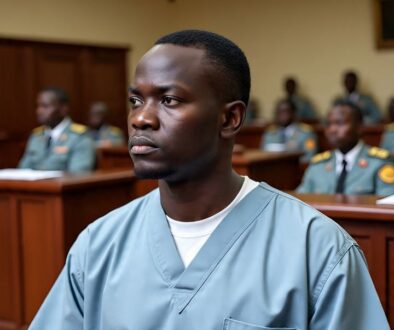RULES OF ENGAGEMENT IN A COMPLEX OPERATIONAL ENVIRONMENT: STRIKING THE RIGHT BALANCE
INTRODUCTION
1. Rules of Engagement (ROE) consist of directives issued by competent military authority which delineate the circumstances and limitations under which an armed force engaged in a conflict can initiate and/or continue operations with other forces encountered. Many problems emerge often during operations because of confusion between the Law of Armed Conflict (LOAC) and Rules of Engagement (ROE). It is therefore right to clarify the distinctions and create ROE suitable for a particular mission, taking into account a number of political, military and legal factors.
RELATIONSHIP BETWEEN LOAC AND ROE
2. The relationship between LOAC and ROE can be clarified as follows:
a. LOAC is international law that we have a legal duty to observe (infractions are punishable under the law).
b. ROE are our rules- how we want to operate. They have to comply with LOAC but they are also influenced by other critical factors.
c. ROE is always either equal in restrictiveness or more restrictive than LOAC. ROE can never authorize an act that is forbidden under LOAC.
CRITICAL FACTORS THAT MAY INFLUENCE PROMULGATION OF ROE
3. Drafting and promulgation of ROE must consider the following:
a. National laws: The armed forces of every nation must comply with the laws of the country in its rules of engagement. E.g. the laws of some nation may restrict the ability of forces to use force. Particularly, deadly force to defend properties. Commanders operating in a multinational operations ought to know these restrictions in order to employ forces in an efficient and effective manner.
b. National Policy: Different nations may differ in their Legal positions on several issues and so the planning and conduct of military operations must reckon with these differing national policy positions. E.g. while some nations may limit permissible levels of incidental injury or collateral damage to levels below what is acceptable under LOAC, others do not allow their military to conduct law enforcement activities in multinational operations.
c. National Security Policy.
d. Operational Concerns (eg Protection of our Forces and types of allies).
e. International Law and Concerns (Eg. LOAC, Status of Forces Agreements, host national laws).
f. Self Defence: Self Defence is the use of force to defend against attack or imminent attack. Both international law and domestic law of all nations recognize self defence. National laws differ on the definition and content of self defence. Hence, individuals and units exercise the right to self defence in accordance with their national law.
4. Four(4) Levels of Self Defence
a. Individual Self Defence: This refers to the right of an individual to defend himself or herself (and in some cases, other individuals) from an attack or imminent attack. Some nations permit commanders to limit individual self defence as in unit self defence.
b. Unit self-defence: Unit self-defence is the right commanders have to defend their unit and other units from their nation in the face of an attack or imminent attack. Some nations permit this right to be limited by orders from higher authority.
c. Protection of others: This refers to the the right to defend specified persons (who are not part of the force) against attack or imminent attack.
d. National self-defence: article 51 of the United Nations Charter confers on a nation the right to defend itself against armed attack, and the threat of imminent attack for most nations.
e. Hostile Act and Hostile Intent: The right to use force in self-defence arises, in most cases, in response to a hostile act (attack) and for demonstrated hostile intent (threat of imminent attack).
f. Use of Force in Self-defence : Unless otherwise stated by ROE, all necessary and proportional means and actions may be used in self-defence. At times the threatening entity may be warned to desist from the offending act and military forces are permitted to use force in self-defence only if non-forceful measures fail to deter the offensive attack or:
- Have been exhausted
- Are unreliable, or
- Are deemed insufficient
The use of Force During Operations
5. During peace-time use of force is permitted in self-defence, in exercise of law enforcement authority, and to accomplish operations or mission specifically authorized by a higher national authority.
6. LOAC Principles Concerning the use of Force
a. Military Necessity– The requirement whereby a belligerent has the right to apply any measures not forbidden by the LOAC which are required to successfully accomplish any military operation.
b. Distinction– The requirement to distinguish between the civilian population and combatants and between civilian objects and military objectives and to direct operations only against combatants and military objectives.
c. Proportionality– The prohibition of an attack that may be expected to cause incidental loss of civilian life, injury to civilians, damage to civilian objects, or a combination thereof, which would be excessive in relation to the concrete and direct military advantage anticipated.
d. Humanity– The prohibition of the infliction of suffering, injury or destruction not actually necessary for the accomplishment of legitimate military purposes.
e. Precaution– The necessary precautionary measures taken constantly in the conduct of military operations to spare civilians and civilian objects.
f. Weapon Prohibitions– The prohibition of weapons that cause superfluous injury or unnecessary suffering.
OVERALL PURPOSES OF ROE
7. The overall purposes of ROE are as follows:
a. To provide standard guidance during peace time.
b. To control the transition from “peace time” to “Conflict”.
c. To control combat operations during conflict.
d. To control transition away from “Conflict” to “Peacetime”
CONSIDERATIONS WHEN PREPARING ROE
8. The major consideration when preparing ROE are as follows:
a. What is the C-in-C’s goal (eg hostage rescue, freedom of navigation; attack- and dislodge terrorist base).
b. What is the mission, in order to carry out the goal (eg warn the enemy, limited or minor attack or destroy enemy bases).
c. What is the Threat? (eg. Boko Haram; Niger Delta Miliitants; or OPC).
d. Who else is involved? (eg Coalition or Merceneries).
e. Are there any unit’s concerns? (Eg fear of capture of personnel, use of children and women as a shield).
f. Who should prepare the ROE (Those familiar with the occupants and the system).
g. What are the sources of ROE: Joint Task Force Guidance; Treaties of ECOWAS, etc.
Operating Successfully under ROE in a Complex Operational Environment
Operating under the ROE in a complex operational environment is not an easy task, moreover when a balance is to be struck between conflicting interests of the Belligerents. A complex operational environment can be likened to one associated with asymmetric warfare, where the enemy advance has neither front nor rear column or when it has such column is shielded by armless children. Operating under guidance by ROE in such environment means operating in a manner compatible with the ROE even when the operational environment is neither normal nor ROE-friendly.
However, ROE being mission-specific can equally be crafted to be near environment-specific. Within the context of this paper, operational environment may be complex in terms of nature of threat, geographical location of belligerent, types of weapons and its method of operation. For instance, the Boko Haram live with the locals whom they use as human shield in most of their operations. In this case the ROE must be tailored to ensure that own troops do not kill or massacre the armless locals used as shield. Own ROE must continue to be sensitive to such principles of LOAC like military necessity, distinction, proportionality, etc. We must strike the right balance by training own soldiers to show that it is not the calibre of gun that matters but the man behind the gun, does he has fire discipline? Furthermore, efforts should be redoubled in winning the heart and mind of the locals so that they feel much friendlier with own troops than with the enemy.
Conclusion
- The ROE consist of directives issued by military authority that define the circumstances, conditions, degree and manner in which the use of force during military operation might be justified. Factors considered while drafting the ROE includes the goal of the C in C, the threat from the enemy and the units concerns. Applicable laws must include LOAC, National Laws and National Policy. Fighting within the ROE in complex Operational environment is not easy, but effective use of ROE can ameliorate the situation.
References
- Sanremo Handbook on Rules of Engagement By International Institute of Humanitarian Law Sanremo, 2009
- The Manual on the Law of Non-International Armed Conflict-International Institute of Humanitarian Law Sanremo, 2006
- The Constitution of the Federal Republic of Nigeria 1999 (as amended)
- Armed Forces Act Cap A20 The Laws of the Federation of Nigeria, 2004



